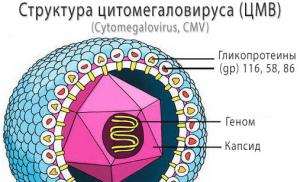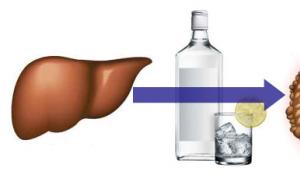Large cities of the Russian Federation list. The smallest cities in Russia by population
The population of modern Russia lives mainly in cities. In pre-revolutionary Russia, the rural population predominated, currently the urban population dominates (73%, 108.1 million people). up to Until 1990, Russia experienced a steady increase in the urban population, contributing to the rapid increase in its share in the population of the country. If in 1913 the urban population accounted for only 18%, in 1985 - 72.4%, then in 1991 their number reached 109.6 million people (73.9%).
The main source of the steady growth of the urban population during the Soviet period was the influx of rural residents into the cities as a result of the redistribution between and agriculture. An important role in ensuring high rates of annual growth of the urban population is played by the transformation of some rural settlements into urban ones with a change in their functions. To a much lesser extent, the urban population of the country grew due to the natural increase in the population of cities.
Since 1991 for the first time in many decades in Russia urban population began to decline. In 1991, the urban population decreased by 126 thousand people, in 1992 - by 752 thousand people, in 1993 - by 549 thousand people, in 1994 - by 125 thousand people, in 1995 .- per 200 thousand people. Thus, for 1991-1995. the reduction amounted to 1 million 662 thousand people. As a result, the share of the country's urban population decreased from 73.9% to 73.0%, but by 2001 it had risen to 74% with an urban population of 105.6 million people.
The largest absolute reduction in the urban population occurred in the Central (387 thousand people). Far East (368 thousand people) and West Siberian (359 thousand people) regions. The Far East (6.0%), Northern (5.0%) and West Siberian (3.2%) regions are leading in terms of the intensity of reduction. In the Asian part of the country, the absolute losses of the urban population as a whole are greater than in the European part (836 thousand people, or 3.5%, compared with 626 thousand people, or 0.7%).
The growth trend in the proportion of the urban population continued until 1995 only in the Volga, Central Black Earth, Ural, North Caucasus and Volga-Vyatka regions, and in the last two regions the growth of the urban population in 1991-1994. was minimal.
Main reasons for the decline of the urban population in Russia:
- the changed ratio of migration flows arriving in urban settlements and departing from them;
- reduction in recent years in the number of urban-type settlements (in 1991 their number was 2204; by the beginning of 1994 - 2070; 2000 - 1875; 2005-1461; 2008 - 1361);
- negative natural population growth.
In Russia, it left its mark not only on the ratio of the urban and rural population in the territorial context, but also on the structure of urban settlements.
Population of Russian cities
A city in Russia can be considered a settlement with a population of more than 12 thousand people and more than 85% of the population of which is employed in non-agricultural production. Cities are distinguished by functions: industrial, transport, scientific centers, resort cities. By population, cities are divided into small (up to 50 thousand inhabitants), medium (50-100 thousand people), large (100-250 thousand people), large (250-500 thousand people), largest (500 thousand people). - 1 million people) and millionaire cities (population over 1 million people). G.M. Lappo distinguishes the category of semi-medium cities with a population of 20 to 50 thousand people. The capitals of the republics, territories and regions perform several functions - they are multifunctional cities.
Before the Great Patriotic War, there were two millionaire cities in Russia, in 1995 their number increased to 13 (Moscow, St. Petersburg, Nizhny Novgorod, Novosibirsk, Kazan, Volgograd, Omsk, Perm, Rostov-on-Don, Samara, Yekaterinburg, Ufa, Chelyabinsk).
At present (2009), there are 11 millionaire cities in Russia (Table 2).
A number of the largest cities in Russia with a population of more than 700 thousand, but less than 1 million - Perm, Volgograd, Krasnoyarsk, Saratov, Voronezh, Krasnodar, Togliatti - are sometimes referred to as sub-millionaire cities. The first two of these cities, which were once millionaires, as well as Krasnoyarsk, are often called millionaires in journalism and semi-officially.
Most of them (except for Tolyatti and partly Volgograd and Saratov) are also interregional centers of socio-economic development and attraction.
Table 2. Cities-millionaires of Russia
More than 40% of the population lives in large cities of Russia. Multifunctional cities are growing very fast, satellite cities appear next to them, forming urban agglomerations.
Millionaire cities are the centers of urban agglomerations, which additionally characterize the population and significance of the city (Table 3).
Despite the advantages of large cities, their growth is limited, as there are difficulties in providing cities with water and housing, supplying a growing population, and preserving green areas.
Rural population of Russia
Rural settlement - the distribution of residents by settlements located in rural areas. At the same time, the entire territory located outside the urban settlements is considered rural. At the beginning of the XXI century. in Russia there are about 150 thousand rural settlements, in which about 38.8 million people live (data from the 2002 census). The main difference between rural settlements and urban settlements is that their inhabitants are predominantly engaged in agriculture. In fact, in modern Russia, only 55% of the rural population is engaged in agriculture, the remaining 45% work in industry, transport, non-manufacturing and other "urban" sectors of the economy.
Table 3. Urban agglomerations of Russia
The nature of the settlement of the rural population of Russia differs in natural zones depending on the conditions of economic activity, national traditions and customs of the peoples living in those regions. These are villages, villages, farms, auls, temporary settlements of hunters and reindeer herders, etc. The average density of the rural population in Russia is approximately 2 persons/km2. The highest density of the rural population is noted in the south of Russia in the Ciscaucasia (Krasnodar Territory - more than 64 people / km 2).
Rural settlements are classified according to their size (population) and the functions they perform. The average size of a rural settlement in Russia is 150 times smaller than an urban one. The following groups of rural settlements are distinguished by size:
- the smallest (up to 50 inhabitants);
- small (51-100 inhabitants);
- medium (101-500 inhabitants);
- large (501-1000 inhabitants);
- the largest (over 1000 inhabitants).
Almost half (48%) of all rural settlements in the country are the smallest, but they are home to 3% of the rural population. The largest proportion of rural residents (almost half) live in the largest settlements. Rural settlements in the North Caucasus are especially large, where they stretch for many kilometers and number up to 50 thousand inhabitants. The share of the largest settlements in the total number of rural settlements is constantly increasing. In the 90s of the XX century. settlements of refugees and temporary migrants have appeared, and cottage and dacha settlements are growing in the suburbs of large cities.
By functional type, the vast majority of rural settlements (over 90%) are agricultural. Most non-agricultural settlements are transport (near railway stations) or recreational (near sanatoriums, rest homes, other institutions), as well as industrial, logging, military, etc.
Within the agricultural type, settlements are distinguished:
- with a significant development of administrative, service and distribution functions (district centers);
- with local administrative and economic functions (centers of rural administrations and central estates of large agricultural enterprises);
- with the presence of large-scale agricultural production (crop brigades, livestock farms);
- without industrial enterprises, with the development of only personal subsidiary plots.
At the same time, the size of settlements naturally decreases from rural regional centers (which are the largest) to settlements without industrial enterprises (which, as a rule, are small and smallest).
According to the All-Russian Population Census, as of October 14, 2010, there were 1,287 urban-type settlements in Russia. Of these, 206 with a population of more than 10 thousand inhabitants. No. Urban-type settlement Region Population, thous. (2002) ... ... Wikipedia
Contents 1 Europe 1.1 Austria 1.2 Azerbaijan (also in Asia) 1.3 ... Wikipedia
The list includes only those settlements of the Russian Federation that, based on data from the Federal State Statistics Service, have the status of cities. The area of the city is understood as the territory within its city limits, ... ... Wikipedia
According to the results of the 2010 All-Russian Population Census, among 1,100 cities in Russia, 37 cities had a population of more than 500 thousand inhabitants, including: 2 cities of a multimillionaire (Moscow, St. Petersburg) more than 2 million inhabitants, 12 cities ... ... Wikipedia
According to the results of the All-Russian Population Census of 2010, there are 66 cities in the Far Eastern Economic Region, of which: 2 largest cities from 500 thousand to 1 million inhabitants 2 large cities from 250 thousand to 500 thousand inhabitants 6 large cities from 100 thousand to 250 thousand inhabitants 6 … … Wikipedia
In the Central Economic Region, there are 139 cities with a population of more than 20 thousand people, including: Moscow 11.5 million inhabitants of 66 cities in the Moscow Region Main article: List of cities in the Moscow Region 72 cities in other regions of the Central ... ... Wikipedia
There are 34 cities in the Volga-Vyatka economic region with a population of more than 20 thousand people, of which: 1 millionaire more than 1 million inhabitants 3 large cities from 250 thousand to 500 thousand inhabitants 4 large cities from 100 thousand to 250 thousand inhabitants 8 medium-sized cities from 50 thousand to 100 ... ... Wikipedia
According to the results of the All-Russian Population Census of 2010, there are 52 cities in the Central Chernozem Economic Region, of which: 2 largest cities from 500 thousand to 1 million inhabitants 3 large cities from 250 thousand to 500 thousand inhabitants 2 large cities from 100 thousand ... Wikipedia
European cities with a population of more than 500 thousand people. As of the middle of 2012, there are 91 such cities in Europe, among which 33 cities have a population of more than 1,000,000 inhabitants. The list contains official data on the number ... ... Wikipedia
This article is proposed for deletion. An explanation of the reasons and the corresponding discussion can be found on the Wikipedia page: To be deleted / November 11, 2012. While the discussion process ... Wikipedia
Russia. The expanses of this State have no end and no beginning. In Russia, as well as in any modern country, there are cities. Small, medium and even cities with a million people. Each city has its own history, and each one is different.
Every year, sociological surveys are conducted in settlements, mainly a population census. The vast majority of cities are small settlements, especially there are parts of Russia where settlement is not so intense. The ranking includes the ten smallest, but cities of the Russian Federation.
City of Kedrovy. 2129 people

The city of Kedrovy is located in the Tomsk region and is very little known. Located in a pine forest, its purpose is a settlement for oil station workers.
Built Kedrovy in the eighties of the last century. This whole city consists of almost one five-story houses. Surprisingly: several five-story buildings in a pine forest. Probably, its inhabitants do not complain about the smell of exhaust gases and the noise of cars. 2129 people - the population of the city of Kedrovy.
City of Ostrovnoy. 2065 people

Murmansk region. It is located on the coast, near the Yokang Islands (Barents Sea). What is most interesting is that it is practically a ghost town. Only about 20% are inhabited. There are no roads to the city. Railway lines, too. Can only be reached by water or air. Previously, as those who still remained there say, an airplane flew, but now there are only helicopters, and then only occasionally. If you look at it from afar, then the city is quite rather big, but if you know its population, it will be difficult to believe. In total, 2065 citizens live in this dying city.
City of Gorbatov. 2049 people

Approximately 60 kilometers from Nizhny Novgorod. The city is truly ancient, information about it was first recorded in 1565. Before it began to die out, it produces (and produced) ropes, ropes and other similar things for the navy.
Studies have been conducted, and the results say that 2049 people now live in the city. In addition to ropes and ropes, gardening in this city is also very well developed. There is also a souvenir factory.
Ples city. 1984 people

Belongs to the Ivanovo region. There is information about him that comes from the chronicle of the Novgorod monasteries (1141), this information is the first. Some sources say that this city once had its own fortress, but when is still not clear. The population is falling, and the city will probably continue to attract tourists with its legend.
It does not look like modern cities: there are no five-story buildings, transport communications. It looks like an ordinary village, only bigger. The population is 1984 people. The city has no industrial enterprises.
City of Primorsk. 1943 people

It just has more modern buildings. Reminiscent of a small Pripyat, apparently built to the same standards. Located in the Kaliningrad region. Before the war, it belonged to the Germans, but was captured in the 45th year by the Red Army.
It acquired its name two years after the capture. Now 1943 people live in it. As far as we know, it can be easily reached. Before the city belonged to the Soviet Union, it was called Fischhausen. From 2005 to 2008, it was listed as an urban-type settlement in the Baltic urban district.
City of Artyomovsk. 1837 people

In the last century, about thirteen thousand were registered (in 1959). The population began to drop rapidly. It is located in the Krasnoyarsk Territory, about 370 kilometers from the center. It looks like a large plant in a mountainous area.
It is in fifth place in the ranking of the smallest cities in the Russian Federation. This city was founded in 1700, it was previously called Olkhovka, as it was surrounded by trees of this species. Now it is part of the Kuraginsky district. The population is falling, at the moment it is 1837 people. It is engaged in the timber industry, as well as the extraction of gold, copper and silver.
City of Kurilsk. 1646 people

1646 people live in this city and Kurilsk is located on the island of Iturup. Belongs to the Sakhalin region. The Ainu once lived here, they are an indigenous tribe. Later this place was settled by explorers of Tsarist Russia. It is somewhat reminiscent of a resort village, although the climate for recreation is very unsuitable.
The terrain is mountainous, which adds more picturesque places to Kurilsk. He is mainly engaged in fish farming. In 1800 it was captured by the Japanese and only by 1945 it was occupied by the soldiers of the Red Army. The climate is moderate.
City of Verkhoyansk. 1131 people

This city is the northernmost settlement in Yakutia. The climate is very cold, several decades ago the air temperature was recorded here, which was about -67 degrees Celsius. Winter is very cold and windy.
This city is characterized by low rainfall. In 2016, its population was 1125 people, and in 2017, according to the latest census, it increased by 6 people. This city was built as a Cossack winter hut.
City of Vysotsk. 1120 people

It was built as a port. It is located in the Leningrad region (Vyborgsky district). Passed into the possession of the Soviet Union only in the early forties of the last century, and before that belonged to Finland. It plays a strategic role, since the naval base of the Federal Security Service of the Russian Federation operates here. The population of the city of Vysotsk is, according to the latest data, 1120 inhabitants. Vysotsk is located in a very convenient place for the border troops, right on the border with Finland. The port also has an oil loading function.
City of Chekalin. 964 people

Tula region, Suvorovsky district. In first place in the ranking of the smallest cities in the Russian Federation. In 2012, they wanted to recognize it as a village, but the residents of the city began to protest and left the status. Another, old name is Likhvin.
During the war, Likhvin was renamed Chkalin. The fact is that at this place the Nazis executed a partisan, who was then only sixteen years old. He received the title of Hero of the Soviet Union posthumously. Despite such a small population, which is only 964 people, In 1565 (the year of its foundation) it occupied an area of about 1 square verst.
List of cities in the world by population with a population of over 4 million as of January 2015. There are 3 cities with a population of more than 20 million people and 16 cities with a population of more than 10 million people. The largest cities are Shanghai (24,150,000), Karachi (23,500,000) and Beijing (21,150,000). There are two Russian cities among the largest cities: Moscow (10th place) and St. Petersburg (43rd place). The table shows the population of cities without taking into account the suburbs.
Cities by population
| # | Town | Population (people) | City area (km 2) | Population density (person / km 2) | The country |
|---|---|---|---|---|---|
| 1 | Shanghai | 24,150,000 (with rural suburbs) | 6 340,50 | 3 809 | PRC PRC |
| 2 | Karachi | 23 500 000 | 3 527,00 | 6 663 | Pakistan Pakistan |
| 3 | Beijing | 21,516,000 (with rural suburbs) | 16 410,54 | 1 311 | PRC PRC |
| 4 | Delhi | 16 314 838 | 1 484,00 | 7 846 | india india |
| 5 | Lagos | 15 118 780 | 999,58 | 17 068 | Nigeria Nigeria |
| 6 | Istanbul | 13 854 740 | 5 461,00 | 6 467 | Turkey Turkey |
| 7 | Guangzhou | 13 080 500 | 3 843,43 | 3 305 | PRC PRC |
| 8 | Mumbai | 12 478 447 | 603,40 | 20 680 | india india |
| 9 | Tokyo | 13 370 198 | 622,99 | 14 562 | japan japan |
| 10 | Moscow | 12 197 596 | 2 561,50 | 4 814 | Russia, Russia |
| 11 | Dhaka | 12 043 977 | 815,80 | 14 763 | Bangladesh Bangladesh |
| 12 | Cairo | 11 922 949 | 3 085,10 | 3 864 | Egypt Egypt |
| 13 | Sao Paulo | 11 895 893 | 1 521,11 | 7 762 | Brazil Brazil |
| 14 | Lahore | 11 318 745 | 1 772,00 | 3 566 | Pakistan Pakistan |
| 15 | Shenzhen | 10 467 400 | 1 991,64 | 5 255 | PRC PRC |
| 16 | seoul | 10 388 055 | 605,21 | 17 164 | The Republic of Korea The Republic of Korea |
| 17 | Jakarta | 9 988 329 | 664,12 | 15 040 | Indonesia Indonesia |
| 18 | Kinshasa | 9 735 000 | 1 117,62 | 8 710 | Democratic Republic of the Congo Democratic Republic of the Congo |
| 19 | Tianjin | 9 341 844 | 4 037,00 | 2 314 | PRC PRC |
| 20 | mexico city | 8 874 724 | 1 485,49 | 5 974 | Mexico Mexico |
| 21 | Lima | 8 693 387 | 2 672,30 | 3 253 | Peru Peru |
| 22 | Bangalore | 8 425 970 | 709,50 | 11 876 | india india |
| 23 | London | 8 416 535 | 1 572,15 | 5 354 | UK UK |
| 24 | New York | 8 405 837 | 783,84 | 10 724 | USA USA |
| 25 | Bangkok | 8 280 925 | 1 568,74 | 5 280 | Thailand Thailand |
| 26 | dongguan | 8 220 207 | 2 469,40 | 3 329 | PRC PRC |
| 27 | Tehran | 8 154 051 | 686,00 | 11 886 | Iran Iran |
| 28 | Ahmedabad | 8 029 975 | 475,00 | 11 727 | india india |
| 29 | Bogota | 7 776 845 | 859,11 | 9 052 | Colombia Colombia |
| 30 | Ho Chi Minh City | 7 681 700 | 2 095,60 | 3 667 | vietnam vietnam |
| 31 | Hong Kong | 7 219 700 | 1 104,43 | 6 537 | PRC PRC |
| 32 | Baghdad | 7 180 889 | 4 555,00 | 1 577 | Iraq Iraq |
| 33 | Wuhan | 6 886 253 | 1 327,61 | 5 187 | PRC PRC |
| 34 | Hyderabad | 6 809 970 | 621,48 | 10 958 | india india |
| 35 | Hanoi | 6 844 100 | 3 323,60 | 2 059 | vietnam vietnam |
| 36 | Luanda | 6 542 944 | 2 257,00 | 2 899 | angola angola |
| 37 | Rio de Janeiro | 6 429 923 | 1 200,27 | 5 357 | Brazil Brazil |
| 38 | Foshan | 6 151 622 | 2 034,62 | 3 023 | PRC PRC |
| 39 | Santiago | 5 743 719 | 1 249,90 | 4 595 | Chile Chile |
| 40 | Riyadh | 5 676 621 | 1 233,98 | 4 600 | Saudi Arabia Saudi Arabia |
| 41 | Singapore | 5 399 200 | 712,40 | 7 579 | Singapore Singapore |
| 42 | Shantou | 5 391 028 | 2 064,42 | 2 611 | PRC PRC |
| 43 | Saint Petersburg | 5 225 690 | 1 439,00 | 3 631 | Russia, Russia |
| 44 | Pune | 5 049 968 | 450,69 | 6 913 | india india |
| 45 | Ankara | 5 045 083 | 1 910,92 | 2 282 | Turkey Turkey |
| 46 | chennai | 4 792 949 | 426,51 | 21 057 | india india |
| 47 | Abidjan | 4 765 000 | 2 119,00 | 2 249 | Cote d'Ivoire Cote d'Ivoire |
| 48 | Chengdu | 4 741 929 | 421,00 | 11 260 | PRC PRC |
| 49 | Yangon | 4 714 000 | 598,75 | 7 873 | Myanmar Myanmar |
| 50 | Alexandria | 4 616 625 | 2 300,00 | 2 007 | Egypt Egypt |
| 51 | chongqing | 4 513 137 | 1 435,07 | 3 145 | PRC PRC |
| 52 | Calcutta | 4 486 679 | 200,70 | 24 252 | india india |
| 53 | Xi'an | 4 467 837 | 832,17 | 5 388 | PRC Links
An excerpt characterizing the List of cities in the world by populationNapoleon enters Moscow after a brilliant victory de la Moskowa; there can be no doubt about victory, since the battlefield remains with the French. The Russians retreat and give up the capital. Moscow, filled with provisions, weapons, shells and untold riches, is in the hands of Napoleon. The Russian army, twice as weak as the French, does not make a single attempt to attack for a month. Napoleon's position is the most brilliant. In order to fall on the remnants of the Russian army with double strength and exterminate it, in order to negotiate a favorable peace or, in case of refusal, to make a threatening movement on Petersburg, in order even, in case of failure, to return to Smolensk or Vilna , or stay in Moscow - in order, in a word, to keep the brilliant position in which the French army was at that time, it would seem that no special genius is needed. To do this, it was necessary to do the simplest and easiest thing: to prevent the troops from plundering, to prepare winter clothes, which would be enough in Moscow for the entire army, and to correctly collect provisions for the entire army that were in Moscow for more than six months (according to French historians). Napoleon, the most brilliant of geniuses and having the power to direct the army, historians say, did nothing of the sort.Not only did he not do any of this, but, on the contrary, he used his power to choose from all the paths of activity presented to him that which was most stupid and pernicious of all. Of all that Napoleon could do: spend the winter in Moscow, go to St. Petersburg, go to Nizhny Novgorod, go back, north or south, the way that Kutuzov went later - well, whatever you think up is more stupid and more pernicious than what he did Napoleon, that is, to remain in Moscow until October, leaving the troops to plunder the city, then, hesitating whether to leave or not to leave the garrison, leave Moscow, approach Kutuzov, do not start fighting, go to the right, reach Maly Yaroslavets, again without experiencing the chance to break through , to go not along the road along which Kutuzov went, but to go back to Mozhaisk and along the devastated Smolensk road - nothing could be more stupid than this, more detrimental to the army, as the consequences showed. Let the most skillful strategists come up with, imagining that Napoleon's goal was to destroy his army, come up with another series of actions that would, with the same certainty and independence from everything that the Russian troops undertake, would completely destroy the whole French army, like what Napoleon did. The brilliant Napoleon did it. But to say that Napoleon destroyed his army because he wanted it, or because he was very stupid, would be just as unfair as to say that Napoleon brought his troops to Moscow because he wanted it, and because that he was very smart and brilliant. In both cases, his personal activity, which had no more power than the personal activity of each soldier, only coincided with the laws according to which the phenomenon took place. Quite falsely (only because the consequences did not justify the activities of Napoleon) historians present to us the strength of Napoleon weakened in Moscow. He, just as before, as after, in the 13th year, used all his skill and strength to do the best for himself and his army. Napoleon's activity during this time is no less amazing than in Egypt, in Italy, in Austria and in Prussia. We do not know correctly about the extent to which the genius of Napoleon was real in Egypt, where forty centuries looked at his greatness, because all these great feats are described to us only by the French. We cannot correctly judge his genius in Austria and Prussia, since information about his activities there must be drawn from French and German sources; and the incomprehensible surrender of corps without battles and fortresses without siege should incline the Germans to recognize genius as the only explanation for the war that was waged in Germany. But there is no reason for us to recognize his genius in order to hide our shame, thank God. We have paid to have the right to simply and directly look at the matter, and we will not cede this right. His activity in Moscow is as amazing and ingenious as elsewhere. Orders after orders and plans after plans come from him from the moment he enters Moscow until he leaves it. The absence of residents and deputations, and the fire of Moscow itself, do not bother him. He does not lose sight of either the good of his army, or the actions of the enemy, or the good of the peoples of Russia, or the administration of the valleys of Paris, or diplomatic considerations about the forthcoming conditions of peace. In military terms, immediately after entering Moscow, Napoleon strictly orders General Sebastiani to follow the movements of the Russian army, sends corps along different roads, and orders Murat to find Kutuzov. Then he diligently orders the strengthening of the Kremlin; then he makes an ingenious plan for a future campaign across the entire map of Russia. In terms of diplomacy, Napoleon calls to himself the robbed and ragged captain Yakovlev, who does not know how to get out of Moscow, sets out to him in detail all his policy and his generosity and, writing a letter to Emperor Alexander, in which he considers it his duty to inform his friend and brother that Rostopchin badly ordered in Moscow, he sends Yakovlev to Petersburg. Having set out in the same detail his views and generosity before Tutolmin, he sends this old man to St. Petersburg for negotiations. |













